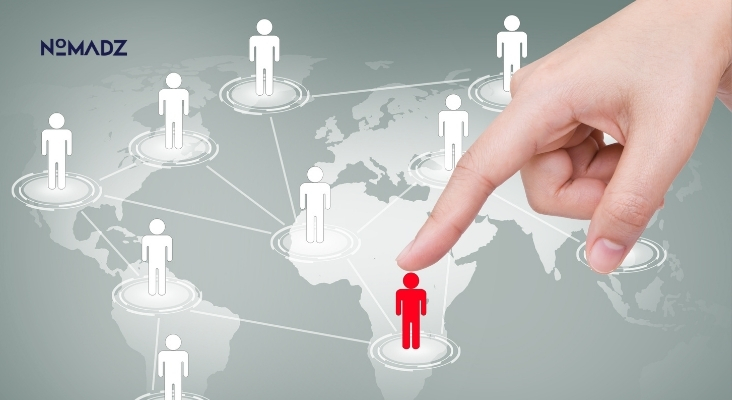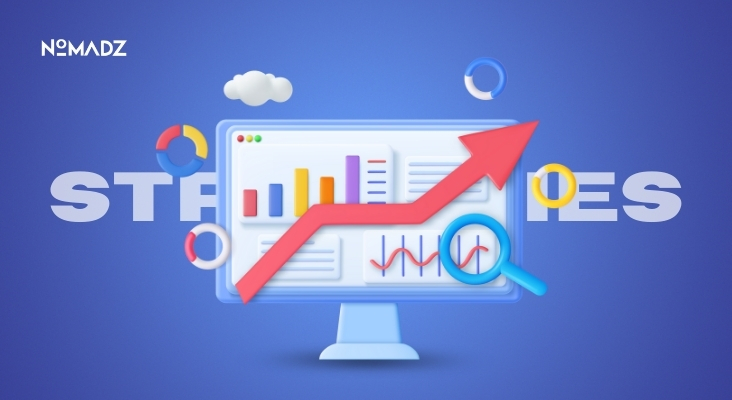Customer Acquisition Cost (CAC): Formula, Calculator & More
The customer acquisition cost (CAC) is one of the most essential metrics used in the modern competitive market to estimate the effectiveness of a brand’s expansion. Learning how to calculate the customer acquisition cost, including the formula and how to optimize it, can make a startup either develop smartly or blow up.
Continue reading to learn more about key information you should be aware of, including customer acquisition cost, client acquisition, and related statistics, as well as the marketing cost per customer.
What is CAC?
CAC stands for Customer Acquisition Cost. It is a measure of the expenditure your company incurs to gain a single new customer.
This includes advertisement expenditure, cost of customer acquisition, marketing expenditure, sales force salaries, software subscription costs, commission, and agency costs, among other overheads. It refers to the cost per customer required to acquire them through marketing.
Why CAC Matters?
CAC directly contributes to a business’s profit and growth, so be sure to keep this metric in mind. Check out more details below:
- Profitability Check: In case CAC is more than a customer lifetime value (LTV), you are actually in the loss.
- Budget Efficiency: Acquisition cost marketing helps in selecting the most effective channel to use, based on the ROI. The best channels can be SEO, paid ads, and events.
- Scale Decisions: With an understanding of your CAC, you can make smart decisions on whether to expand and on marketing budget.
Also Read: Brand Tracking: Tools, Metrics & Benefits for 2025
Customer Acquisition Cost Formula
The standard customer acquisition cost formula is straightforward:
| CAC = Total Sales & Marketing Costs ÷ Number of New Customers Acquired |
For example, if you spend $40,000 in a quarter on marketing and sales and acquire 160 new customers, your customer acquisition cost is $250 per customer.
Some companies also calculate a blended CAC, which includes upselling and cross-selling, but for clarity, we are here with the basic formula.
Step-by-Step CAC Calculator
Know how to calculate CAC easily by following the steps below:
1. Select your timeframe—monthly, quarterly, or annually.
2. Add all acquisition costs:
- Advertising (search, social media, display)
- Marketing team salaries
- Tools and technology
- Promotional and agency fees
3. Count new customers in that period.
4. Divide total costs by the new customer count, presto, you have CAC.
5. Analyze payback period: Aim to recoup CAC within 3–6 months; exceeding 12 months may signal trouble.
Also Read: Tips to Find Your Target Audience in 2025
Real-Time Benchmarks (2025)
The overall average CAC varies significantly by industry. Check out different industries below:
1. Arts & Entertainment: $20–$21
2. Health & Beauty Fashion: ~$127–$129
3. Electronics: ~$377
4. SaaSB2B: $536
5. e‑Commerce: $70–$78 on average, with ranges $45–$98 depending on niche
- SaaS CAC ratio benchmarks (2025): CAC ratio ≤1 (excellent), 1–3 (sustainable), >3 (flagged)
- LTV: CAC ratio: Aim for a 3:1 to 5:1 ratio.
Reduction Strategies for CAC
CAC must be reduced to improve profitability, ROI, and many other factors. So, check out the options below if you’re looking to reduce your CAC:
- Optimize the acquisition funnel: Identify the bottlenecks in the funnel and refine the UX, site speed, and messaging.
- Channel variety: Combine paid advertising (time-efficient but pricey) with organic material (cheaper but slower).
- Apply data and AI: Determine predictive targeting, personalization, and/or predictive bidding to optimize spend and cut waste.
- Improve retention/LTV: Upsells, adoption programs, and referrals accelerate cash-paying initial CAC across more revenue
Is CAC High or Low?
- Compared to industry benchmarks: A CAC of $400 may be reasonable for SaaS but excessive for B2C retail.
- Check LTV ratio: Maintain at least a 3:1 LTV: CAC to sustain growth
- Monitor payback period: Ideally, payback should occur within 3–6 months; exceeding 12 months could drain cash.
Also Read: Click Through Rate Tips & Formulas 2025
Conclusion
Knowledge of your Customer Acquisition Cost (CAC) and how to optimize it is crucial for enabling your business to generate profits and grow. Regardless of the industry, SaaS, eCommerce, or professional service, by controlling CAC, you will be certain that your marketing and sales endeavors will bear fruit.
Through the customer acquisition cost formula, sporadic industry benchmarking, and strategic optimization of your funnel and retention, you can cut waste and maximize ROI.
FAQs
1. What is CAC in marketing?
CAC – cost of acquiring a new customer by using marketing and sales.
2. How is customer acquisition cost calculated?
The total sales and marketing cost can be divided by the number of new customers during a specified period.
3. What is a good CAC ratio for SaaS?
In SaaS, make the CAC a proportion of less than 1 or the LTV: CAC ratio as 3:1 or 5:1.
4. How can firms lower marketing costs per customer?
Optimize funnels, utilize mixed channels, deploy analytics, and boost retention.
5. Why include sales salaries in CAC?
Staff salaries that directly relate to the acquisition activities are a factor in attracting new clients.









Leave feedback about this